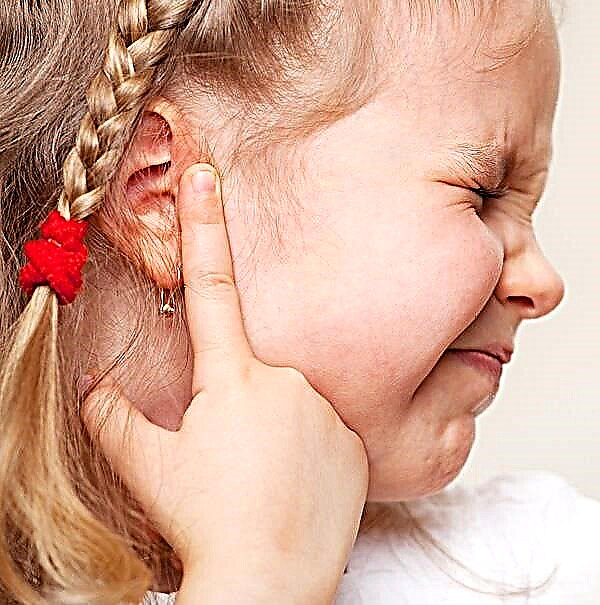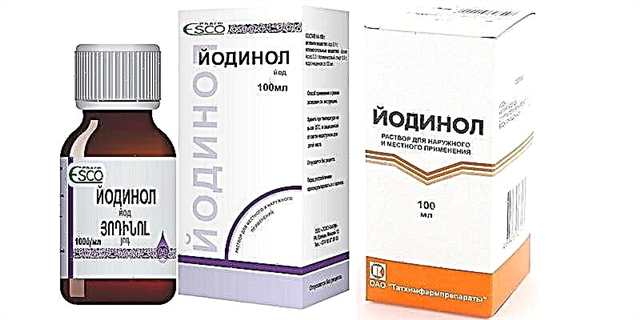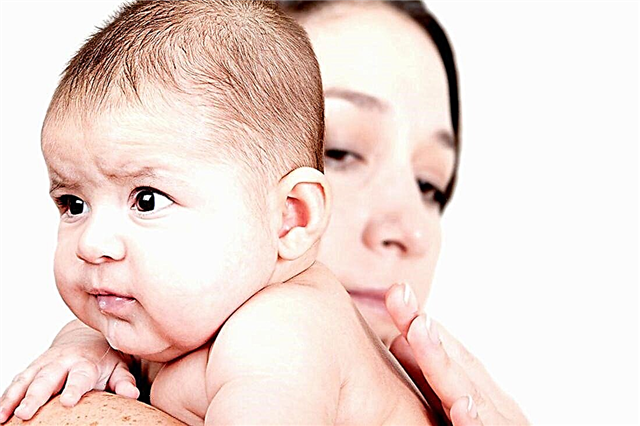Young children are distinguished by activity and mobility, which is why they have a significantly increased risk of falling, getting injured, including hitting the head. In addition, the skull of a child is rather fragile in comparison with an adult, especially when it comes to newborn babies. At this age, the fontanel has not yet closed, so the bones can easily shift as a result of the impact. In such cases, even a minor injury can have serious negative consequences for the child. What is TBI, what to do if a child hits his head, how to protect a child from injury? This article will answer these and other questions.

Childhood head injury is common
Why are they hitting their heads most often?
The risk of getting any injury increases due to the fact that babies are very active:
- They study themselves, their own capabilities, master and train new motor skills;
- They study the surrounding space - small children are very curious, they learn with great interest the world and its constituent objects and objects;
- Babies have a lot of energy that needs to be released. Active movement is a great way to spend it.
The second reason for frequent injury is the immaturity of bone tissue: in young children, bones are quite fragile, soft, elastic, easily amenable to mechanical stress, and can move relative to each other. The brain of babies is immature, characterized by a high water content, the presence of "dumb" areas. One of these weak areas in newborns is an open fontanelle. That is why the most dangerous head injuries occur during infancy and in the second year of life.
These features determine the specifics of a child's traumatic brain injury. On the one hand, it can be assumed that the structure of a child's head (that is, more elastic and mobile bones, a hydrophilic brain, temporarily free areas inside the skull) should more reliably protect the GM from mechanical damage. In practice, it turns out that such compensation works only in the most harmless situations. If the blow is strong, the specific structure of the skull not only aggravates the injury, but also significantly masks the pathological changes occurring in the baby's brain.
For a child of any age to have a concussion, only two factors are enough:
- Lack of adult supervision;
- An appropriate environment - the presence of objects, upon contact with which you can get a serious injury, the presence of hills from which the baby can fall at any time.
Depending on age, the main sources of danger can replace each other:
- From the moment of birth, traumatic objects can be a sofa, a changing table, a parent's bed. As soon as an adult is distracted for a second, the child, turning abruptly or jerking his leg, pushes himself down.
- At 6 months old, a stroller, cradle, and highchair are a threat to a baby. At the moment when the mother is not around, or something has distracted her attention, the baby may awkwardly turn around or try to get up and not calculate his strength and capabilities. In this case, falling to the floor will not take long.
- In the second year of life, the child already knows how to stand, walk (not only at home on a soft carpet, but also on the street on hard asphalt), can climb stairs, climb onto a chair, table and other hills. At the same time, the coordination of movements in the baby is not yet sufficiently developed - the baby at any time can lose balance, fall and hit his head.
Why is it the head that most often "suffers" when falling? Obviously, it would be much safer to bump into other parts of the body, such as your foot or butt. However, the primacy in injuries almost always belongs to the head. This is explained by the elementary laws of physics: the baby's head is quite large in size and weight, moreover, it is located at the highest point of the body, which, in turn, is not stable enough. This "device" bears a clear resemblance to an inverted pyramid. In order for the baby to lose balance and fall, a small shift, a slight push, combined with immature coordination of movements, is enough. The head is the first to strive to hit the obstacle.
Why is a blow dangerous for a newborn
According to Dr. Komarovsky, due to the large amount of fluid in the skull and the softness of the bone tissue, the baby will feel good even after receiving a head injury. He will cry rather from fright, while the body will not receive harm. However, not all such cases end well. Therefore, parents should watch the child more closely after the fall.

Newborn head injury
If this is not done, there is a possibility of allowing negative consequences. These may include internal bleeding, damage to the GM substance. To understand that a baby needs help, parents must be able to recognize the symptoms of a dangerous injury. If you find any, you must call a doctor.
Important! Head trauma can cause irreversible consequences that can be life-threatening for the child. Sometimes such cases provoke a lag in mental and mental development.
The most harmless type of injury is a simple bruise (bump). In this situation, the help of a specialist is not needed. Concussion is the next most dangerous. In addition, this phenomenon is very common and accounts for 9 cases out of 10. Further in terms of severity - brain contusion, which leads to rupture of blood vessels. The most dangerous injury is an open traumatic brain injury, as a result of which the integrity of the meninges is disrupted (most often this occurs due to the ingress of broken bones into the brain tissue). Such damage heals for a long time, and there is also a possibility of infection.
Possible consequences for the child
At the moment of head impact, mechanical damage to the soft tissues, bones of the skull and the brain occurs (traumatic brain injury, or TBI for short). If the blow is weak, the child is likely to get off with a bruise or, in extreme cases, receive a concussion.
Brain contusion
This type of injury is otherwise called contusion. This is a variant of traumatic brain injury, its more severe form. The damage is characterized by destruction and necrosis of the brain tissue of varying intensity. In such cases, the functions of the brain are impaired, and the pathology is long lasting. Damage can be both single and multiple. Trauma often includes a fractured skull and internal bleeding (as evidenced by a large bump on the head). In case of injury, neurological disorders also occur, in particular, epileptic seizures, impaired coordination, paralysis, respiratory arrest, palpitations, loss of consciousness.
Important! If a child leaks blood or clear liquid from the nose or ear, bruises around the eyes appear, the child needs immediate hospitalization.
Concussion
It is the least dangerous type of traumatic brain injury. GM in this case is damaged at the functional level. Violations are usually minor, recovery is quick. The bones of the skull are not damaged by a concussion. The main symptom of this injury is a short-term loss of consciousness (from several seconds to several minutes). Older children may experience slight memory loss of events that occurred before, during, or after the injury. Also, often the consequences of damage are nausea and vomiting (in some cases, multiple), headache, dizziness, tinnitus, deterioration in general health.
Most of these signs are also present in infants, but it is almost impossible to identify them, because a small child cannot tell about his feelings. In such a situation, you should pay special attention to the baby's appearance: the baby becomes very pale, he has blue circles around his eyes, his eyes become cloudy. In addition, the child begins to be more capricious, is very excited, or, conversely, shows apathy and drowsiness, his appetite deteriorates, it becomes difficult for him to fall asleep, and frequent regurgitation occurs. Also, sensitivity to light and sounds increases, and body temperature rises after hitting the head of a child. A significant sign of a concussion is "shifting eyes" - involuntary eye movements along the horizontal axis, as well as a slight dilation of the pupils.

Concussion in a child
Fracture
With a fracture of the base of the skull, a clear liquid with a yellowish tinge (cerebrospinal fluid) comes out of the nose or ears. There are also bruises behind the ears and bruises around the eyes.
Traumatic brain injury
This concept includes many injuries, both closed and open. In the latter case, there is a violation of the integrity of the soft tissues of the head. TBI, depending on the severity, are divided into 3 groups:
- Lungs;
- Medium severity;
- Heavy.
The type of brain damage is distinguished:
- Concussion GM;
- Injury;
- Compression of the brain.
The manifestations of TBI are temporary. In babies of different ages, the consequences of damage can be as follows:
- For a child under 1-2 years old. The kid constantly screams, cries or, conversely, shows apathy, lethargy. The baby has frequent regurgitation, fever.
- Preschoolers (from 2-3 to 6-7 years old). Loss of memory after trauma, short-term loss of consciousness, lethargy, lack of response to words and other external stimuli, incoherent speech. Also, the baby begins to feel sick, he complains of dizziness and headache.
- Students. The consequences of trauma almost completely coincide with the manifestations of TBI in adults. Most often it is loss of consciousness (with minor injuries - up to several minutes, with severe injury - up to several days or even weeks). Nausea, vomiting, memory impairment, headache, dizziness are the standard list of TBI symptoms. Serious damage is indicated by muscle tension, spasms, lack of reaction of the pupils to light, their difference in size among themselves, impaired swallowing function, and increased body temperature.
What to do
What are the parents' actions if the child hits his head? If it is a minor injury, no action is required. It is enough to monitor the behavior of the "patient" at home. In more serious cases (for example, if the child hit the back of his head or forehead hard), the baby will show corresponding signs. If they are found, you should immediately call an ambulance for further hospitalization. Most often, medical supervision of a patient does not exceed 24 hours, after which the child is discharged home.
If the baby has a head injury, parents need to do the following:
- Stop panicking and fussing;
- Don't waste time trying to find out who is to blame for the injury;
- Call a team of doctors and follow the instructions of the health workers exactly;
- Closely observe the behavior of the baby, remember all the details of the events;
- If it is possible to find a place of damage (redness, lump), cold should be applied. This can be an ice pack, frozen chicken leg. The ice must be wrapped in a cloth. As an alternative to ice, you can use a cloth soaked in cold water. Cold is applied for 10-20 minutes;
- In case of loss of consciousness, it is necessary to turn the child's head to one side;
- If the baby has vomiting, you should maintain a position on your side, while lowering your head a little;
- After injury, the child may fall asleep. You do not need to wake him up, it is better to wait for an independent awakening. To make sure that everything is in order with the baby, you need to check his reactions (shake slightly) and carefully monitor the sleep;
- If you suspect memory loss, you can carry out an appropriate check: call the child by name, ask him questions about where he is, where his mother is, how he feels, and so on.

First aid for a head injury in a child
Serious head injury in a newborn
According to the well-known children's doctor E. Komarovsky, the main symptoms of dangerous trauma in children are:
- Loss of consciousness (regardless of duration).
- Apathy, drowsiness.
- Convulsions.
- Unusual behavior.
- Repeated vomiting.
- Inability to move the limbs.
- Different pupil sizes.
- The appearance of blue spots around the eyes or behind the ears;
- Bleeding or discharge of colorless fluid from the nose, ears.
How to protect a newborn's head
Situations where the child often falls and bumps his head is not uncommon for many families. In order to prevent the baby from falling from the changing table, it is better to swaddle the baby on the sofa (usually it is at a lower height). Place a rug next to the sofa to cushion the anticipated fall. Also recommended:
- Do not be distracted for a second during the procedure;
- Hold the child with your hand;
- If you need to leave (answer a phone call, open the door, etc.), it is better to take your baby with you.
An excellent solution would be to purchase a low stroller for a little fidget - he will be able to sit and lie in it, while getting out of such a stroller will not be easy for him, and it will be safer to fall.
When the child has gone, it is recommended to buy special socks for him with rubber inserts in the sole (this device will reduce slipping). Also, at first, you should wrap all sharp corners in the house with a soft cloth, remove furniture away from windows.
Head injury in children is quite common. The danger is that it can be very difficult to identify signs of TBI in babies. Therefore, at the first suspicion of serious damage to the child's brain, seek immediate medical attention.



